Self portraits or fertility symbols? Venus figurines of Upper-Paleolithic Eurasia [NUDITY]
Above: Comparison of body-view for pregnant woman (top) and Venus figurine (bottom).
Venus figurines are tiny sculptures of the human form carved from rock, bone, and antler, or sculpted from clay. They were made for 20,000 years during the Upper-Paleolithic period (roughly 35,000 y/a), and have been found throughout Eurasia (1).
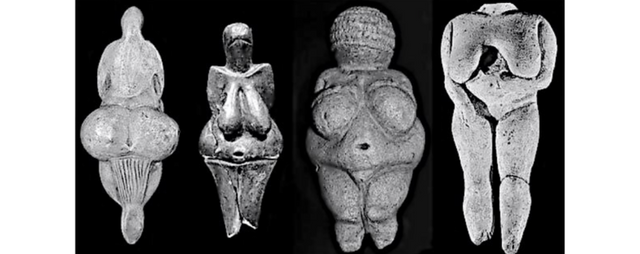
As seen in the image above, many of the more famous Venus figurines share the aesthetic of exaggerated female traits. Large breasts, hips, abdomen and reproductive organs, along have minimal details in the head and face define the popular vision of the Venus figurine.
However, the complete archaeological record of these statues varies tremendously, with examples of both not-pregnant and prepubescent figures, and even of male figurines (as well as examples with detailed depiction of the face) (1).
The famousness of these stereotypical Venus figurines is owed to their exaggerated sexiness: Venus figurines are ancient symbols of fertility and sex according to pop culture, just as they were to many classic archaeologists. Some scholars have suggested they served as pornography in the Paleolithic, while other less sensational scholars suggest they were socially functional depictions of women (1). One author even suggests Venus figurines imply the existence of a peaceful, matriarchal, goddess-worshipping civilization in the Upper-Paleolithic (2).

The list of theories about origins and purposes of Venus figurines goes on and on (1). Because they are ancient, their true purposes in human lives will probably never be known to science. Obviously, this does not stop people from guessing.
Another alternative view: Female self-depiction in the paleolithic
One academic has suggested Venus figurines are self portraits (3). Professor Leroy McDermott (1996) suggests that rather than fetish objects, each figurine is a women in the Upper-Paleolithic, sculpted as she sees herself (probably while pregnant).
McDermott asks us to imagine looking down: we see our bodies from a distorted fashion view called a lozenge perspective, shown in the image below. This perspective distorts outward and then inward, exaggerating the breasts and foreshortening the feet. It skews the view of the body's form across an unsymmetrical diamond plane. The lozenge perspective eschews anatomical accuracy in favor of the individual's perspective of her body.
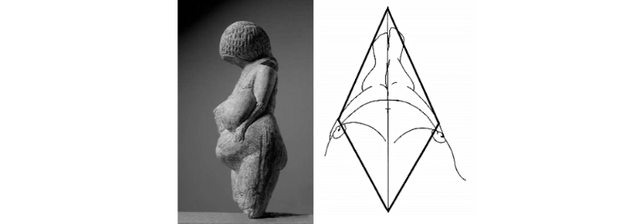
In the photographs below, we see a pregnant woman (top row) from the lozenge perspective. McDermott compared these photos with others from the POV of Venus figurines (bottom row).

The similarities are indeed remarkable.
Use of this technique by the the sculptors might explain why the heads of most Venus statues lack facial detail, and why the feet taper off dramatically.
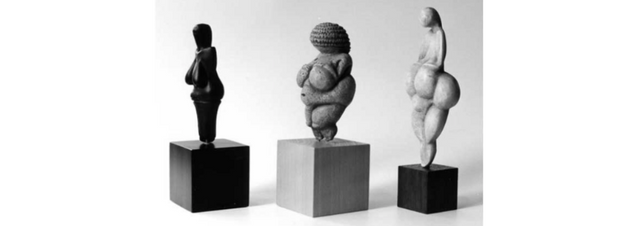
Just how plausible a hypothesis is this?
This is certainly a fascinating idea, but it has never held much sway with mainstream archaeologists (see comment#1 in McDermott, 1996[3]). They criticize the results as cherry picking the evidence for examples that fit their own model while ignoring the many exceptions to the Venus figurine stereotype (including male and prepubescent examples; see 1). One of these is the "Dancing Venus of Galgenberg", which is among the oldest known Venus figurines (shown below). Note the relatively accurate and realistic proportions, which do not jibe with McDermott's model.
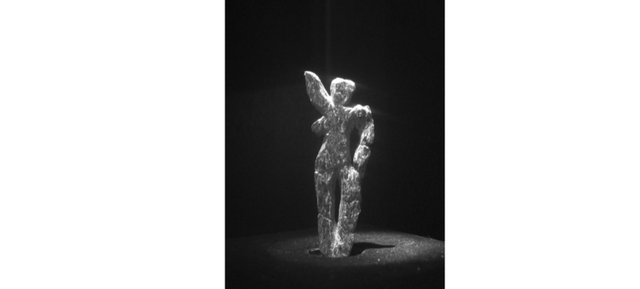 Scholars commenting on McDermott also argue that use of the lozenge perspective --or of any perspective at all for that matter-- does not fit with other art of the paleolithic . That is, only primitive use of perspective is seen in paleo-art (see comment #1 in McDermott, 1996[3]). For example, the cave painting below (from Lascaux) shows a kind of layering that is not actual use of perspective (4).
Scholars commenting on McDermott also argue that use of the lozenge perspective --or of any perspective at all for that matter-- does not fit with other art of the paleolithic . That is, only primitive use of perspective is seen in paleo-art (see comment #1 in McDermott, 1996[3]). For example, the cave painting below (from Lascaux) shows a kind of layering that is not actual use of perspective (4).

An invitation to analysis
Personally, I am with the skeptics.
Yes, it is plausible that a trend of lozenge perspective self-portraiture happened at some place and time in Eurasia. However, following Bahn's comments in McDermott (1996) I suggest it is more likely that McDermott is wrong, and is probably picking out data to confirm a hypothesis. While I would assume a variety of traditions for making these figurines across Upper-Paleolithic Eurasia, I have to seriously doubt the existence of one that differed so much from what is known about paleolithic art.
How about you? If you have opinions on all this, please reply!
If you made it this far, thank you! I would love to start some conversations about archaeology and pre-history with people here on steemit, both academic and otherwise. I'm sure this will become easier as the user base grows. In the meantime I intend to simply keep posting as quality of work as I can!
Afterward
- Feminist perspectives on this controversy can be read here.
- I have yet to encounter serious follow-up studies on this controversy. If you know of any, please let me know.
#science #history #archaeology #photography
Edits: Spelling
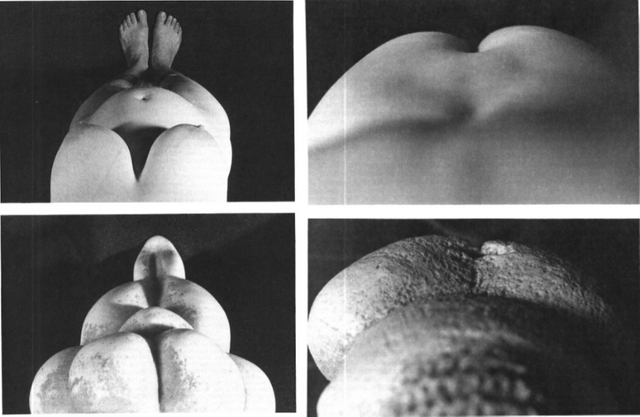
Great consideration and perspective! Thank you for sharing. I also thought there were philosophical consideration in this matter that brought about, as another reason, why the statues were built in the way they are.
Thanks so much @eric-boucher. I'm happy to share this information on steemit. Your photography is exceptional, and I'm honored to have you comment here. edit:spelling
I'm so glad you enjoyed the photography and most hopefully the text as well!?! :) I'm wondering if you could see all the pictures or not and if you "upvoted" it as well? I've had some issues over the past week as my blog seemed to have been corrupted somehow... Thanks for the compliment too, it is very appreciated. Namaste :)
Hello. So many of the photos on your posts do appear as the flying saucer, so there seems to be a problem somewhere. As for your text , cards on the table I did not read it yet, but am doing so right now during my break at work. Upvoting, too :)
Here's to the upcoming weekend on steemit!
Thanks a bunch for letting me know and, of course, for the upvote as well. I think I might have gotten hacked somehow... Well, it is a very young web site after all and hope this whole thing will come to an end as I want to post more travelog and quite a few more post of all kinds. Keep taking good care and your smiles, namaste :)
I also agree with your opinion. The lozenge perspective maybe have had a trend for some time with these people, but it could have changed. Just like how modern art has so many different perspectives. Hence why the other scholars may have not agreed with McDermotts hypothesis. Paleolithic art probably had different artist just like the modern world. Each artist would have had there own style. This sort of art may have 'trended' with the people for a while before they changed the trend. It's human nature to change what they like and don't like. Either way its still fascinating and beautiful.
Oh, boobs! This one gotta earn a lot!
Just kidding. :)
Interesting observation, really. We haven't got too far from those times. Reproduction is still our ultimate goal. And fertility is still an extremely valuable quality.
Yeah, I was toying with the idea of calling this post "Tits and Time Travel".
Thanks for commenting. I really enjoyed reading your introductory post, you have a very good voice.
Seems pretty logical to me
Great post
What a fascinating post. I know hardly anything about early art history but from what I understand of the structure of those proto-social structures, women played a much more central and powerful role in Paleolithic tribal communities than was previously thought...they were often shamans or priestesses and it seems like it would make sense that they would be the ones that would be crafting objects imbued with great cultural and spiritual power.
Great post! I learned a little about Venus figurines in my art history class but I always appreciate learning more! Thanks for sharing. :)
I think the Venus figurines represent something far more profound than a 'fertility symbol' or self-portraiture: they're evidence of a population sufficiently sedentary to result in at least two women that were so remarkably obese that they were memorialised as symbols of plenty for thousands of years.
What I have grasped from this post is - I can fashion together some type of crude object out of a coke can, bury it, and maybe thousands of years from now, someone will over-analyze and ascribe far more meaning to it than actually exists.
I feel you are a victim of what Ted Kaczynski describes as liberal oversocialization. In your case, while not having genius level brainpower, you probably have more than average, but not enough actual real world problems to spend it on.
Edit: NICE use of Kaczynski, genius.
Great article/post - interesting - nice to see that early man appreciated that a womans figure should be 'round' and 'shapely' not stick thin as the advertising magnets would have us believe is the epitome of a female form!